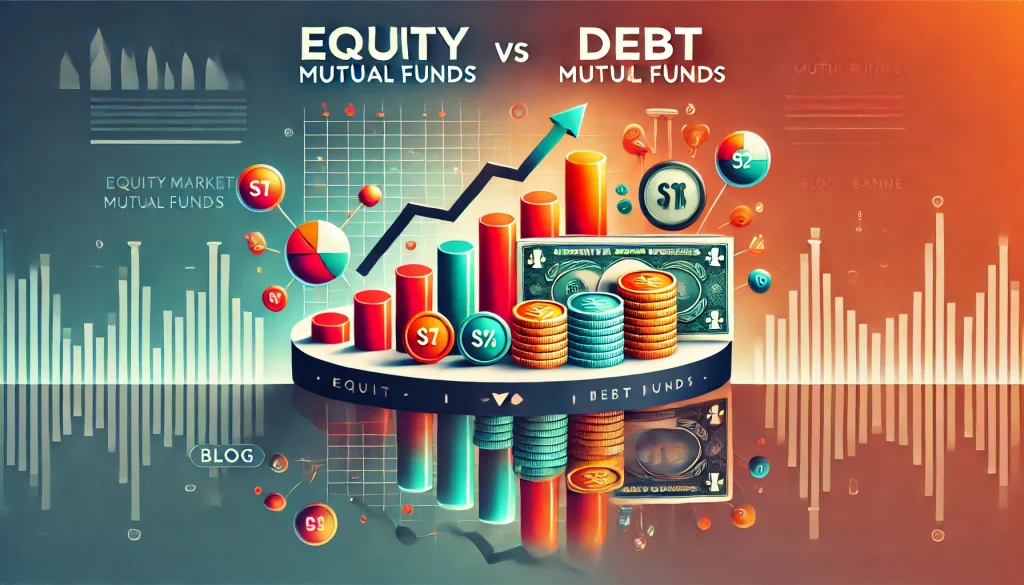
Nowadays, when you browse through your social media profiles or the internet in general, it is not uncommon to find several advertisements stating the benefits of investing in mutual funds. Truth be told, they are actually excellent means to realise your financial goals. But there is a problem. Given the numerous types of mutual funds available in the market, it can be difficult for you to choose the right one. Thus, it is important for you to have a basic understanding of each category. By doing so, you can select the appropriate ones as per your investment objective. Keep reading!
Types of Mutual Funds in India – 2025
The different types of mutual funds available in India can be classified based on certain aspects, which have been highlighted below:
1. Portfolio Management
When it comes to portfolio management, mutual funds can be divided into the following types:
a. Actively Managed Funds
As the name suggests, in case of an actively managed fund, the manager actively takes part in decisions regarding the portfolio’s assets.
The fund manager, with his/her team of experts, selects the stocks and decides whether to buy, sell or hold them based on his/her expertise and knowledge about the market.
These funds generally aim to provide higher returns than passively managed mutual funds because the goal is to take advantage of an expert’s knowledge. The risk-to-return ratio depends upon the strategy implemented by the fund management team and it is usually mentioned in the scheme’s offer document.
b. Passively Managed Funds
As the name suggests, these schemes are passively managed, and the only goal is to replicate the performance of an underlying index. In this regard, the fund manager plays a passive role.
He/she is only responsible for implementing minor changes to the asset’s allocation strategy so that the fund’s returns mirror the returns of its underlying index with minimum error in tracking.
2. Underlying Asset
Now, when it comes to the underlying asset, the types of mutual funds are:
a. Debt Mutual Funds
Debt mutual funds are fixed-income generating schemes which invest in securities like bonds, treasury bills and government securities.
These are basically debt instruments released by public as well as private entities to generate money from investors and, in return, offer interest amounts at specified intervals.
These schemes can have an investment horizon ranging from 1 day to 3 years. They are suitable for individuals who want a regular income from their investments, along with lesser risks.
Now, debt funds have several subcategories based on the assets in the portfolio or fund management strategies. Some of them are:
- Corporate Bond Funds: As the name suggests, these mutual funds allocate at least 80% of their capital to corporate bonds. In addition, fund managers only choose bonds with the highest credit ratings, which minimises the credit risk considerably. Thus, they can be an excellent option for investors with low-risk tolerance.
- Gilt Funds: These schemes invest at least 80% of the funds in government securities with varying maturity periods. The credit risk is low, but the returns are usually prone to fluctuations in interest rates.
- Dynamic Bond Funds: Depending upon the interest rate regime, dynamic bond funds purchase debt assets with different maturity periods. These schemes usually have a horizon ranging from 3 to 5 years and can be perfect for investors with a moderate risk appetite.
- Money Market Funds: As the name suggests, this type of debt mutual fund primarily invests in money market instruments like commercial papers, certificates of deposits, repurchase agreements and treasury bills having a maturity of up to 1 year. The goal is to provide high yet stable returns to investors in the short term. Some other examples of debt-oriented mutual funds based on investment tenure are overnight funds, liquid funds, short-duration funds, long-duration funds, etc.
b. Equity Funds
In this type of mutual fund, the fund manager invests in shares of various companies based on either their industrial sector, market capitalisation, performance, return rate, etc.
Equity mutual funds always tend to generate better returns in comparison to other types of mutual funds. However, they also carry significant risks as market sentiments can affect their performance.
In terms of market capitalisation, equity mutual funds can be subdivided into the following:
- Small-Cap Funds: Small-cap funds have at least 65% of their assets invested in shares of small-cap companies.
Small-cap companies rank 251st and lower in terms of market capitalisation. These schemes are known for providing higher returns but, at the same time, are highly volatile because the companies are new and growing but not established yet. - Mid-Cap Funds: Mid-cap funds have almost 65% of their assets invested in mid-cap companies that rank between 101 to 250 as per market cap.
These schemes offer better returns in comparison to large-cap funds and are more stable than small-cap funds. However, they are comparatively less stable than large-cap mutual funds. - Large-Cap Funds: Large-cap funds invest approximately 80% of their investable corpus in the shares of the top 100 companies in terms of market capitalisation.
They may offer lower returns in comparison to small and mid-cap funds but have greater stability because the companies are well-established in their respective sectors.
Some other examples of equity-oriented mutual funds are value funds, sectoral funds, focused funds, dividend-yield funds, etc.
c. Multi-Cap Mutual Fund
These mutual funds offer exposure to a diversified range of assets which may include debt, equity, real estate, gold and more. The investment objective is to facilitate capital appreciation for investors who have a long-term investment horizon and wish to balance risk and reward effectively. Investing in these schemes can provide excellent portfolio diversification.
d. Hybrid Mutual Fund
Hybrid mutual funds have a combination of debt and equity assets in their portfolio.
The percentage of asset allocation depends on the scheme’s investment objective. For example, equity-oriented hybrid funds will invest more in equity instruments, while debt-oriented schemes will allocate more capital to debt instruments.
The different types of hybrid funds are as follows:
- Aggressive Hybrid Funds: These funds allocate 65% to 80% of their portfolio in equity and 20% to 35% in debt instruments.
The risk factor is high; however, it comes down considerably thanks to investments made in debt assets. As the name suggests, these funds are ideal for aggressive investors who have a medium to high-risk appetite. - Conservative Hybrid Funds: They invest 10% to 25% of their corpus in equities and the rest 75% to 90% in debt assets.
Their investment objective is to generate stable income from the debt instruments while also employing equity asset investments to boost returns. - Balanced Advantage Funds: These funds are dynamic in nature and can shift from a 100% debt to a 100% equity allocation. The fund managers do not have any restrictions in this regard and can balance out their investments depending upon the market condition.
e. Theme Specific Mutual funds
Some mutual funds have their own specific themes. They aim to provide a certain benefit to their investors. Here are some of them:
- Retirement Benefit: These mutual funds aim to provide a steady monthly income or lump sum to their investors after they retire.
The fund manager of such schemes usually invests in long-term debt and equity instruments to minimise risks and facilitate capital appreciation. - Tax-Saving: Tax-saving mutual funds or Equity Linked Savings Schemes (ELSS) facilitate tax savings for their investors. According to Section 80C of the Income Tax Act, up to Rs.1.5 lakh of your invested corpus within a financial year is liable for deduction if you invest in such funds. However, these funds come with a lock-in period. These schemes usually invest a major part of their funds in equity assets.
- Arbitrage: Arbitrage mutual funds take advantage of the difference in prices of a security in two or more markets. In this regard, the fund manager buys and sells a high volume of shares each day in order to book a reasonable amount of profit. Usually, when arbitrage opportunities are not available, these funds invest in debt securities and money market instruments.
- Child Welfare: The investment objective of such funds is to financially secure the future of children. These are usually long-term schemes, having a horizon of 5 to 15 years or more. They usually invest in a variety of assets like equity, debt, etc., and provide income in the form of dividends over the entire tenure.
f. Funds of Funds
Funds of funds (FoFs) are unique types of mutual funds that invest in other investment schemes; in simple words, FoFs have underlying mutual funds, not individual assets. The investment objective is to earn the highest returns possible and thus chiefly purchase units of funds that exhibit high and stable performance. Moreover, to increase diversity, these schemes may invest in both domestic and foreign mutual funds.
g. Overseas Mutual Funds
Investing in overseas funds is one of the best ways to gain exposure to international assets.
f. Funds of funds
These schemes can invest in stocks of international companies related to a particular country, a specific industrial sector or a certain geographical region. Investors can gain better returns from such funds as they profit from the development of several economies.
g. Exchange Traded Funds
Exchange-traded funds, or ETFs, are a type of mutual fund whose units can be traded on stock exchanges.
The investment objective of the fund manager is to provide returns similar to a specific benchmark and have asset allocation mirroring the same. They usually have lesser expense ratios in comparison to other mutual funds and also provide higher liquidity.
Final Word
Now that you have a clear idea of the different types of mutual funds, you can choose one which aligns with your investment goals. However, please remember that each mutual fund category comes with its own set of risks. Thus, it is imperative that you assess your risk tolerance before taking a final decision.


